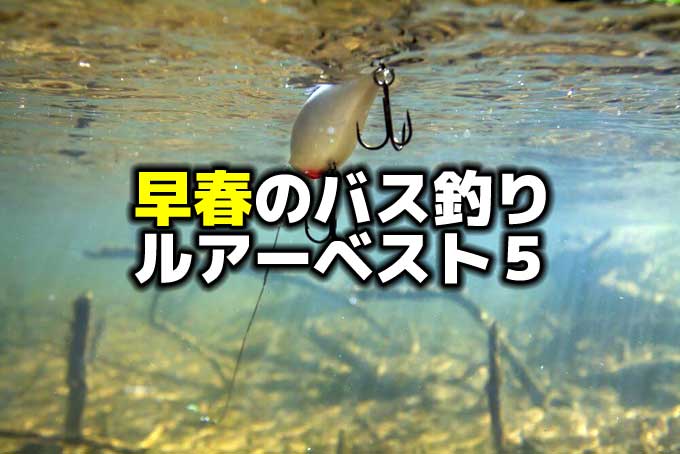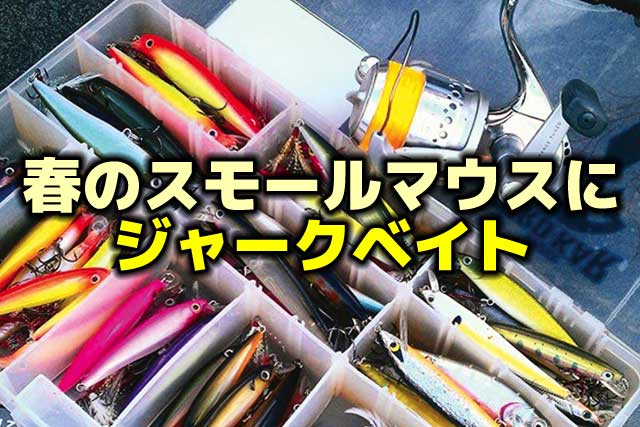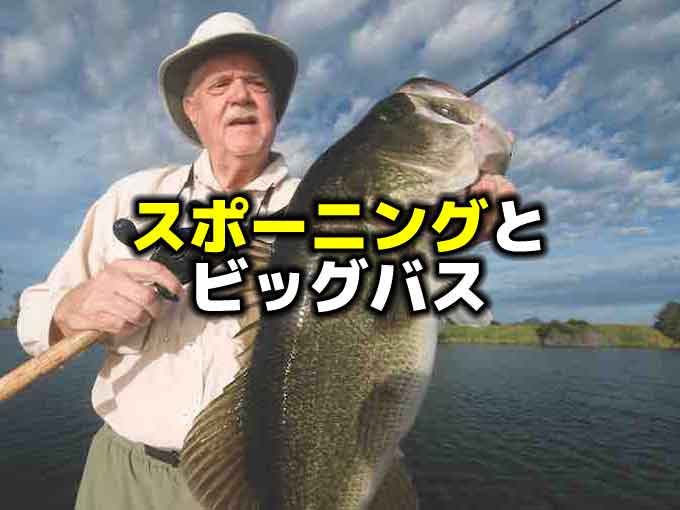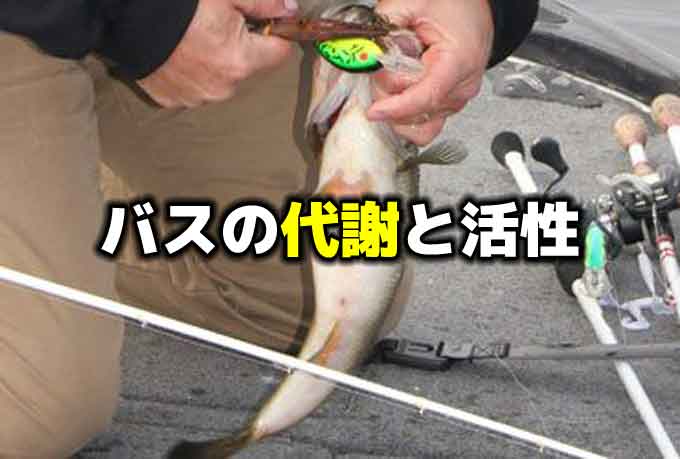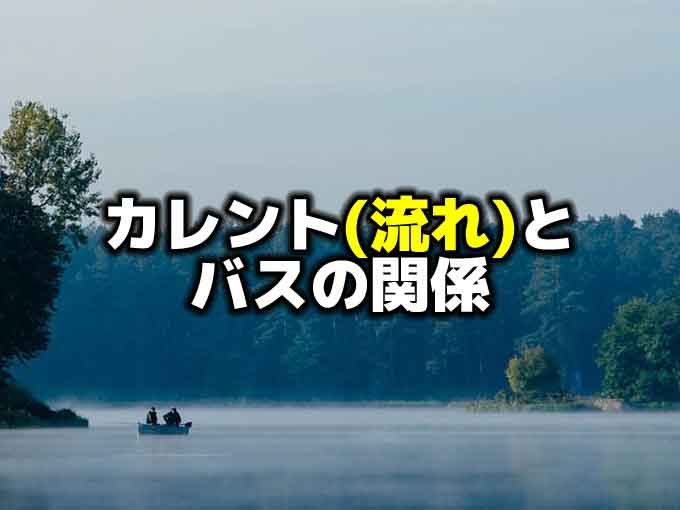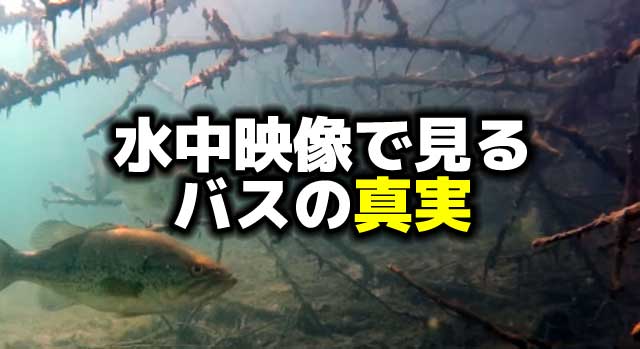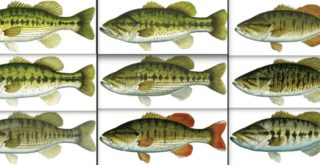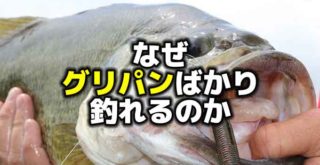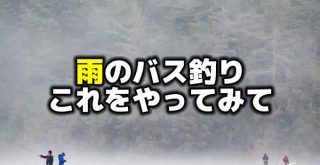水温と魚の活動性の関係を知って、上手なバス釣りを

水温の変化に合わせて魚の代謝や活性も変わります。この記事では、バス釣りを例に、プリスポーン、そして暑い夏場の活動低下までを解説。さらに水温と消化吸収の関係や、リリース時の注意点も説明しています。水温の影響を理解すれば、釣果もアップするかもしれませんね。
こんにちは!店長の小山です!
皆さんはバス釣りをするとき、水温について気にしていますでしょうか。
私たち人間のライフスタイルは季節(気温)によって大きく左右されます。
たとえば夏にコンビニに入るとアイスクリームが欲しくなったり、冬のコンビニでは肉まんが食べたくなったりしますよね。
このたとえは売り手側の商売的な戦略にハマっているだけかもしれませんが(笑)、ライフスタイルになっていることは間違いありません。
魚はより分かりやすく、生き残るために、人間よりもっと素直に水温に対してライフスタイルを変えている生き物です。
その時その時の水温次第で食欲があるのかないのか、どこにいたいのか、何を食べるかという気分が変化しているんですよね。
私は、釣りが上手というわけでもありませんし、人より釣りについて詳しいわけではありませんが、水温は気にしている方だと思います。
過去に特定のルアーやエリアでよく釣れた(釣れなかった)ときの水温を覚えていたり、ネストを発見した時の水温だったり、フィールドごとの暑い季節の低水温、寒い季節の温かい水温なんかを覚えています。
だいたいですしあやふやな部分も多いですし、それが絶対的な法則になるわけでもないのですが、自分なりの基準といいますか、自分の釣りに合った自分だけの判断基準として持っていてもいいような気がしています。
ほかには、魚の気持ちになってみたりとか、自分が戦略家にでもなったかのように思い込むのが好きなだけという部分もあります(笑)
私はそんなことを言っているからいつまでたっても上達しないのだと思いますが、釣りが上手な方はもっと無意識に、もっと高精度に水温についての考えを持っていると感じます。
この記事は、アメリカのカヤックでのルアー釣り専門メディア「JACKSON KAYAK 」のコラム記事で、水温とバスの関係について書かれています。
わりと大雑把な内容かもしれませんが、新しい発見があるかもしれません。
ぜひ読んでみてください。
ハイテク、ローテク、ノーテク
High tech, Low tech or No tech.
With the advancement of electronics many variables appear on the screens of “fish finders”. GPS technology, depth, wind direction, underwater visibility and water temperatures all can be indications of natural influences. Some anglers ignore all the variables and just cast away blindly and hope to bet a bite. Others tap into the alignment of the electronics and search out or “scope” areas before presenting a bait. I’m somewhere in between. I visually search for clues as to the hideouts of whatever fish I have targeted but I do have a submersible thermometer to determine the surface water temperature in the area.
When the Spawn is On.
There is a large variance by species as to when they “go on bed” and the time period before that is known as pre-spawn. Pre-spawn is when you can catch massive numbers of fish but also lends itself to boating a BIG fish. Regardless of species they all feed heavily prior to the spawn in order to prepare themselves for the exhausting ritual of spawning. The appearance of many and certainly the bass family is drastically different after the feeding binge and then weeks later post spawn. *see photo. Not an exact science here’s a list of some of the most popular fish and their desired starting spawning temperatures. Smallmouth bass 59 degrees, largemouth 63, crappie 62 degrees, catfish 70 and bluegill are different in that their normal spawning behavior starts at 70 degrees and on the full moon, with additional spawning occurring on each full moon that the water is at 70 degrees! The moon does affect other species including the category of baitfish like shad and other minnows as well as many other wild creatures. Most fish DO NOT feed during the spawn but will vigorously defend their nests.
Digestion.
As a side note the digestion of our finny friends is in large part tied directly to the water temperature. A bass that eats a six-inch shad in 40-degree water takes around four or five days to digest the shad, same bass, same size shad in 78-degree water and the shad is digested in FOUR OR FIVE HOURS! The optimum digestive water temperature has been previously preached at around 75 degrees, recent studies document the highest rate of feeding and digesting is at 84 degrees.
When Slowdowns Occur.
The metabolism of most fish is in tune with water temperatures. In very cold water 45 and below they can go days without feeding and their movement can be minimized. Notorious cold-water species such a trout, walleye and others may continue a more normal rate of activity. Similarly, in very warm / hot waters (90 degrees and above) fish may slow down and become lethargic, feeding less frequently. This slow down is in direct proportion to the amount of dissolved oxygen contained in the water making breathing difficult. This is why there are often “die offs” that take place during the late, hotter summer months. In either case fish tend to become lazy until there is a natural correction.
Catch and Release.
If your goal is to release your catch during the hot water periods some extra precautions might favor a successful release. Keep in mind mishandled fish may still fall victim to delayed mortality, dying within a day of the release. In warmer environments fish that are played for longer periods can experience a build up of lactic acid (much like humans with a “Charlie horse”) have a full body experience, seize up and die. Play the fish in quickly, measure or photo, minimize the handling of the fish and gently release. Removal of the “slime coat” dooms a fish to a bacterial infection which most times is fatal. Tossing a fish into the air is also potentially damaging because the body of the fish is normally supported by water pressure and the air toss can be similar to a belly flop damaging internal organs.
Being aware of water temperature and its affects on the fish can be critical to the catch. Also being aware of your physical reaction to the outside air can keep you safe and comfortable. Dress for success, life jackets and being prepared goes a long way.
電子機器の進歩によって、魚探の画面には様々な変数が表示されるようになりました。GPSや水深、風向き、水中の視界、水温など、自然の影響を示す情報が表示されます。それらの数値を無視して、ただ盲目的にルアーを投げて魚が食いつくのを待つ釣り人も中にはいます。一方で、魚探の情報をフル活用してポイントを探し、ルアーをキャストする人もいます。
私はその中間といったところでしょうか。狙った魚が隠れているサインを目で見て探りつつ、そのエリアの表層の水温を測る水温計も持っています。
スポーニング
魚の種類によって産卵の時期はかなり違いますが、バスの場合は「ベッド」を作る前の期間を「プリスポーン」と呼んでいます。プリスポーン期間は多くのバスを釣ることができ、大物にも出会えます。バスは産卵に備えて大量の餌を食べ込む期間があるため、その前後では姿形も大きく変わります。
正確な科学的根拠はありませんが、人気の高いゲームフィッシュが産卵を開始する目安の水温を挙げますと、スモールマウスバスが15℃、ラージマウスバスが17.2℃、クラッピーが16.7℃、ナマズが21.1℃、ブルーギルはちょっと変で、21.1℃で満月の時が通常の産卵開始で、その後満月の度に21.1℃以上なら産卵が行われます。月もシャッドやその他のベイトフィッシュだけでなく、他の多くの野生生物にも影響しています。多くの魚は産卵中は餌を食べず、ネストは熱心に守ります。
消化吸収
ちなみにですが、魚の消化吸収能力は水温に大きく左右されます。4.4℃の水中でバスが15cmのシャッドを食べた場合、シャッドを消化するのに4~5日もかかりますが、25.6℃の水中なら4~5時間で完全に消化吸収されます。以前は23.9℃あたりが最も消化吸収に適した水温だと考えられていましたが、最近の研究では28.9℃が最もフィーディングと消化の活動が活発になる温度とされています。
活動低下の時期
ほとんどの魚の代謝は水温に左右されます。7.2℃以下の非常に冷たい水中では、数日間餌を食べずに過ごすことができ、活動量も最小限になります。トラウトやウォールアイ、他の冷水性の魚は比較的普通の活発さが維持されるようです。同様に32.2℃以上の非常に暑い水中では、魚は活動が鈍く、餌を食べる頻度も少なくなります。これは水中の溶存酸素量に比例し、呼吸が困難になるためです。暑い夏に魚が大量に死滅してしまうことがあるのはこのためです。いずれの環境下でも、自然に改善されるまでは魚の活動はスローなままです。
リリース時の注意
暑い時期に釣った魚をリリースするときには細心の注意が必要です。適切にリリースされなかった魚はリリース後1日以内に死亡する「遅延死」を起こす可能性があるため、釣った魚の取り扱いには気をつけましょう。暑い季節に長時間のファイトをした魚は、人間が筋肉痛を起こすのと同じように乳酸が体内に溜まり、全身が強直して死に至ることもあります。できるだけ早く引き上げ、計測・写真撮影を済ませて、素早く優しくリリースしましょう。
魚の粘液をこする行為は致命的な細菌感染症の原因となり、多くの場合は死んでしまいます。また、投げてリリースすることも、魚の体は水圧によって支えられているため、内臓を傷つける可能性があるため避けた方が賢明でしょう。
水温と魚への影響を理解することは、釣果に大きく関係してきます。また、外気温による自分への影響にも気をつけ、防寒対策を怠らず、ライフジャケットを着用するなどの備えを万全にすれば、快適に釣りを楽しむことができるはずです。
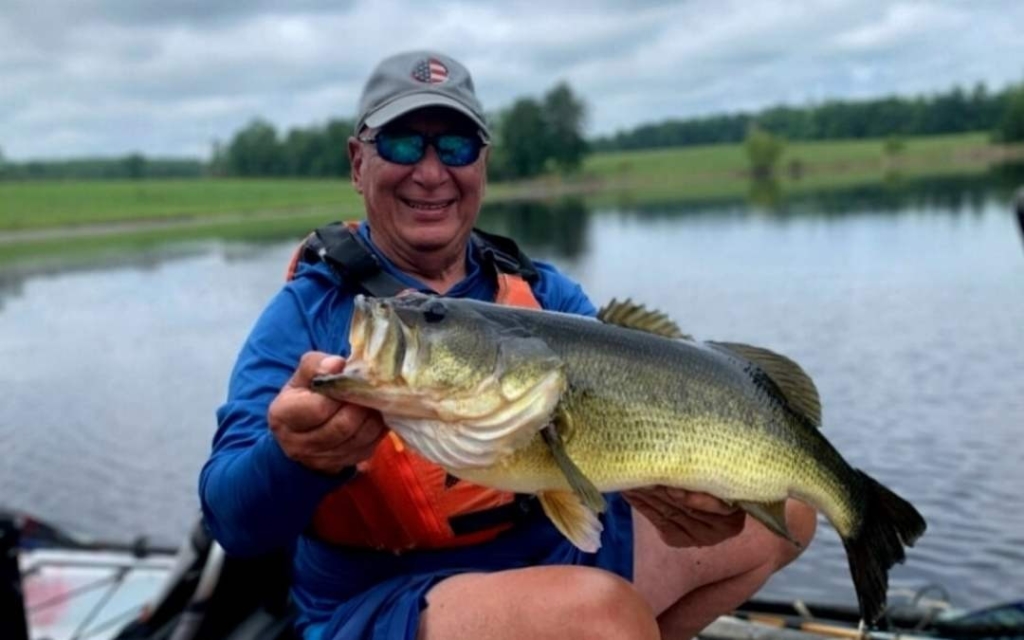
水温と消化の話、すごくないですか。
魚ってそんなに水温に影響されるんだというのを改めて知りました。
4℃くらいだと4~5日で消化し、26℃くらいだと4~5時間で消化してしまうなんて…
冬の1本のバスがどれほど貴重かというのを改めて思い知りましたし、じゃあなんで夏のバスはもっと釣れてくれないんだよ!という憤りも覚えました(笑)
夏とか秋に釣ったスモールがファイト中によくワカサギやエビを吐き出すのですが、形がはっきりしていれば1時間以内、はっきりしてなければ5時間前と判断できますね(数時間前にどのあたりにいたとか)いや、難しい話ですね(笑)
私の感想はどうでもいいとして、今回の話は直接的にバス釣りの釣果を上げるものではないかもしれませんが、バスアングラーにとってはなにかしら興味深い話だったのではないでしょうか。
水温以外にも、魚の粘膜をとらないように、投げてリリースしないようにというアドバイスもありましたね。
また、アメリカのバス釣りで太いラインを使うのは、バスをいち早く抜きあげてリリースし、生存率を高めるためだと、以前このブログで記事を紹介したことがありました。
そういうアメリカの考えも素敵だなと思います。
あなたの一番釣れる水温、好きな水温はズバリ、何℃の時ですか。
それではまた。
毎度ありがとうございます!
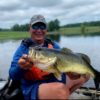
 https://hub.jacksonkayak.com/2023/07/temperature-check/
https://hub.jacksonkayak.com/2023/07/temperature-check/




